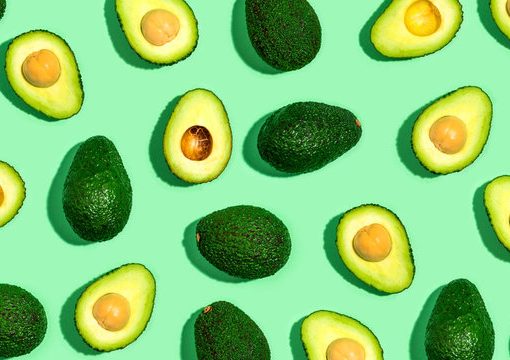People have been celebrating New Year’s for around four millennia.
Most festivities begin on Dec. 31 and continue into the early hours of Jan. 1. Traditions include making resolutions, attending parties, making special foods, and watching fireworks.
The first evidence of New Year celebrations dates back to Babylon 4,000 years ago, but instead of celebrating in winter, they celebrated in March on a day with equal sunlight and darkness. They marked the new year with a massive religious festival called “Akitu” which lasted for 11 days.
Throughout history, cultures around the globe made increasingly sophisticated calendars, typically tying the first of the year to an astronomical or agricultural event. The Egyptians first of the year was when the Nile flooded, while the Chinese celebrated when the second new moon of the winter solstice occurred.
Early Roman calendars had 10 months and 304 days with the first of the year starting on the vernal equinox.
Over time the calendar fell out of sync with the sun and Julius Cesar decided to fix it. He talked with esteemed mathematicians and astronomers to do so. He then introduced the Julian calendar, which closely resembles the Gregorian calendar that many cultures use now.
As part of his changes, Julius insisted that January 1st be the New Year. One of the reasons he insisted this is because of January’s name sake-Janus.
Janus is the Roman god of beginnings. His two faces allowed him to look ahead at the future and back into the past. The Romans made sacrifices to Janus, decorated homes, exchanged gifts, and attended parties in celebration.
For a short time in the medieval ages, religious leaders replaced January 1st as the beginning of the year with days that held more religious weight such as December 25 and March 25. This was later rectified in 1582.
Many cultures celebrate New Year’s. They all celebrate it differently, though. Here are some of the ways different cultures celebrate New Year’s!
Brazil
Brazil celebrates New Year’s by wearing all white. White signifies luck, prosperity, and it is meant to ward off bad spirits.
Traditionally, people wear all white and go to the beach to jump seven waves for good fortune. They also throw flowers in the water as an offering to the goddess Lemanja, who is the goddess of the sea.
Colombia
People in Columbia carry around empty suitcases at midnight in hopes to bring a year full of travel. They also carry around money in their hands to bring prosperity and financial security in the upcoming year.
Lentils are said to bring luck, so many bake them into rice or carry them in pockets.
Mexico
People in Mexico wear different colored underwear on December 31st to usher in good things. Yellow signifies luck, red shows passion, and white is for peace.
Mexicans also clean the house, eat twelve grapes, eat lentils, throw buckets of water out of the window, and sweep coins into the house.
Ecuador
In celebration of the New Year, Ecuadorians celebrate by burning effigies. Burning effigies signifies burning the old year (ano viejo).
An effigy is a sculpture or model of a person. They build these effigies to resemble politicians, pop culture figures, and other icons. They then burn these at midnight.
“It symbolizes the cleansing of bad energy from the previous twelve months, and is meant to bring good fortune.” says Invaluable, an online news site.
Ecuador’s traditions have a darker past though. This tradition started in 1895 when the yellow fever hit Guayaquil. People then had to burn coffins filled with the clothes of the infected.
Spain
Spaniard’s most prominent way of celebrating the New Year is eating grapes. They eat twelve grapes; one for every toll of the clock at midnight.
The grapes are supposed to represent good luck for every month of the year. Some even prepare the grapes beforehand by peeling and seeding them to make sure they are easier to eat.
Denmark
A popular Denmark tradition is smashing old plates and dishes. The Danish save unused dinnerware and smash them against the doors of friends and family to ward off bad spirits.
The Danish also jump off of chairs at midnight to “leap” into the New Year. Additionally, they make Kransekage, a wreath shaped cake.
Greece
The Greek New Year is also the festival of Saint Basil, the founder of the Greek Orthodox Church.
Traditionally, an onion is hung on the doors as a symbol of rebirth, and on New Years Day parents wake their children by tapping them on the head with the onion.
Another tradition is eating Vasilopita. This cake is made with a silver or gold coin inside and whoever finds it in their slice is especially lucky in the upcoming year.
Israel
Rosh Hashanah is the Jewish New Year and is celebrated in many countries. This holiday takes place in the fall, in the seventh month of the Hebrew calendar.
The night the holiday starts, a candle blessing is recited as well as the Kiddush, a blessing over wine. The celebrants enjoy apples and other fruit dipped in honey which signifies blessings and sweetness in the coming year.
The shofar is sounded throughout the celebration. This instrument is made from a ram’s horn and symbolizes humility standing before God.
The Netherlands
The Netherlands celebrates with fireworks and explosions. The fireworks are triggered across major cities for hours. Christmas trees and cars are also burned.
Another thing the Dutch do is eat oliebollen, which means “oil balls.” These are small balls of fried dough dipped in powdered sugar and sold on street corners and shopping centers.
As the finale of the celebration, swimmers jump into the freezing water of the North Sea.
Switzerland
The Swiss drop a dollop of ice cream on the floor at midnight to channel wealth, abundance, and good luck. The Swiss also line the streets in costume and perform symbolic ceremonies to chase away bad spirits.
Scotland
Scotland has their Hogmanay ceremony. Hogmanay has concerts, street festivals, fire festivals, street entertainment, and celebratory acts. It is also known for the tradition of first-footing.
First-footing means that the first person to cross someone’s threshold should bring a gift of luck. Traditionally, that gift could be shortbread or a coal for the fire.
After the ban of Christmas in the 16th and 17th centuries in Scotland, Hogmanay became even more important. It was a way for Scottish citizens to “figuratively chase away the darkness with light, warmth, and festivities,” according to Invaluable.
Japan
Oshogatsu is the Japanese New Year. Throughout December, “year-forgetting parties” also known as Bonekai happen.
On December 31st, Buddhist temples ring their gongs 108 times to signify the 108 temptations one must overcome to achieve nirvana, and to expel wrong deeds and bad luck of the past year.
People also take the day off of work, wear kimonos, and eat soba noodles. Children receive small gifts with money inside called otoshidama. People will write letters to family and friends specifically marked for delivery on January 1st.
China
The Chinese celebrate the Lunar New Year. This is also known as the Spring Festival, which lasts for 15 days, and follows the lunar calendar so it is on a different day each year.
Homes and businesses decorate with red, a color that signifies good luck and fortune. Fireworks are set off on New Years Eve and the next morning. Children receive red envelopes with money, which symbolizes transferring fortune from elders to youth.
There are also parades, traditional food, imperial performances, lion dances, parades, and decorative dragon statues.
United States
United States New Year traditions come from many different beliefs and origins.
When fireworks were banned in New York in the 20th century, people arranged to have a 700-pound ball to drop down a pole. Since then it has become a tradition to watch the ball drop and count the year.
Americans will also sing “Auld Lang Syne.” In the South, people eat “Hoppin’ John,” which has black-eyed peas. Black-eyed peas are believed to symbolize coins and economic prosperity in the coming year.
There are many lucky foods to eat on New Year’s! Some of them include:
- Toshikoshi Soba in Japan
- Vasilopita in Greece
- Berliner Pfannkuchen in Berlin
- Cotechino con Lenticchie in Italy
- 12 grapes in Spain
- Oliebollen in The Netherlands
- Buttered Bread in Ireland
- Black-eyed peas, or “Hoppin’ John” in the American South
“And now we welcome the new year. Full of things that have never been.” — Rainer Maria Rilke, an Austrian poet and novelist.




